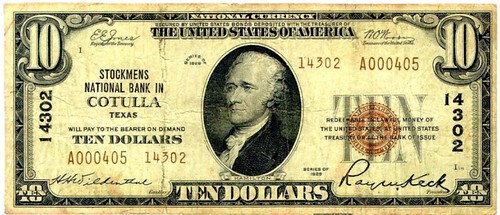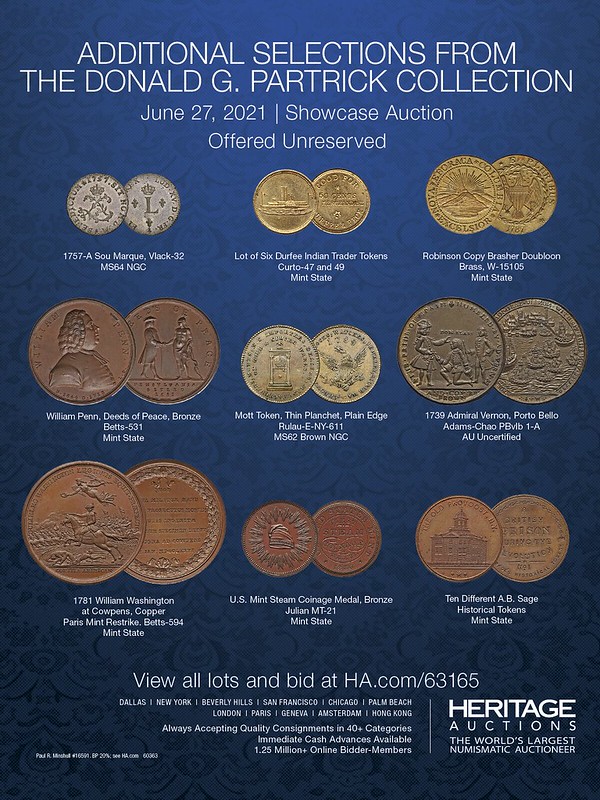
PREV ARTICLE
NEXT ARTICLE
FULL ISSUE
PREV FULL ISSUE
PLATES USED TO OVERPRINT 1929 NATIONALSIt's a very specialized topic, but this Numismatic News article by Peter Huntoon is an interesting look into the manufacturing of National Bank Notes. Here's an excerpt, but see the complete article online. -Editor The purpose of this article is to provide a procedure that will allow you to identify the manufacturer of the overprinting plate used to print the bank information on any Series of 1929 national bank note. This procedure is far easier to use and more fool proof than previous versions circulated by James Simek or published in Huntoon and Simek (2014). Series of 1929 Overprinting Plates Three different manufacturers made the typographic overprinting plates that applied the black bank information to Series of 1929 national bank notes. Most of the overprinting plates were made by Barnhart Brothers & Spindler, a Chicago firm that was awarded a contract by the Bureau of Engraving and Printing to supply all the overprinting plates. The BBS plates were called logotypes, which were cast using a hard metal alloy. BBS couldn’t keep up with the demand for plates during the startup of the series, so the Bureau of Engraving and Printing contracted with the Government Printing Office to make interim electrotype plates using forms prepared at the Bureau. The first GPO stopgap overprinting plates were finished August 26, 1929. The 1,375th required to meet the mid-October deliveries of notes to the Comptroller arrived October 16th (BEP, Aug-Nov, 1929). A handful of GPO plates were made from then into early 1930 to cover expedited orders received from the Comptroller of the Currency bringing the grand total of GPO plates to 1,380 (Hall, 1930, p. 22). The GPO plates were used only for the first printing for the affected banks. The reason was that electrotype plates were soft so in prolonged use, the nickel-faced, lead alloy-backed type would wear poorly and deform under the demanding conditions attending use on the BEP overprinting presses. In contrast, the BBS logotypes were four times harder. The GPO plates were succeeded by BBS logotypes in due course as deliveries of the logotypes caught up. The notes printed from the BBS plates had the same bank signatures, but the layouts differ. The earlier notes in these pairs often have larger signatures so the variety is popularly known as the large-signature variety. The quality of the GPO overprints as judged by the crispness of the images was superior to that of the BBS logotypes.
To read the complete article, see:
Wayne Homren, Editor The Numismatic Bibliomania Society is a non-profit organization promoting numismatic literature. See our web site at coinbooks.org. To submit items for publication in The E-Sylum, write to the Editor at this address: whomren@gmail.com To subscribe go to: https://my.binhost.com/lists/listinfo/esylum All Rights Reserved. NBS Home Page Contact the NBS webmaster 
|


